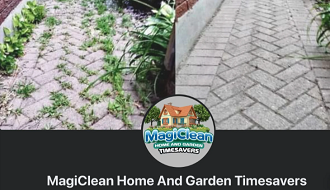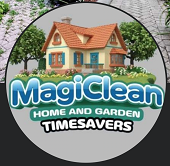Backyard Crafts: Making Leaf Mulch And Compost
Tony O’Neill, skilled gardener and best-selling writer of the well-known “Simplify Vegetable Gardening,” “Composting Masterclass,” and “Your First Vegetable Backyard,” combines lifelong ardour and skilled data to simplify gardening. His mission? Serving to you domesticate a thriving backyard. Extra on Tony O’Neill


As a gardening fanatic, I’ve all the time been looking out for methods to streamline managing all that backyard waste whereas additionally naturally enriching my soil. Each fall, I discovered myself staring down at mountains of leaves, scratching my head over learn how to flip this seasonal bounty right into a boon for my beds and borders.
It was by diving into analysis and rolling up my sleeves for some good previous experimentation that I stumble on the key: turning these leaves into gold—properly, leaf mulch and compost gold, that’s.
It’s an unimaginable solution to give again to your backyard utilizing what nature supplies. Be part of me as we dive deep into reworking our gardening recreation collectively!
Key Takeaways
- Leaf mulch is made by decomposing leaves over time, enriching the soil with important vitamins and serving to retain moisture.
- Making leaf mulch and compost might be finished in a number of methods, comparable to utilizing a garden mower to shred leaves, making a compost bin, or just piling them up in your backyard.
- Leaf mildew compost helps suppress weed development, reduces the necessity for chemical fertilizers, and helps a wholesome soil construction that advantages plant development.
- Gathering various sorts of leaves can enhance the standard of the leaf mildew; nonetheless, it’s vital to keep away from diseased or insect-infested leaves to stop spreading points in your backyard.
- Utilizing leaf mulch round vegetation retains them insulated throughout winter months whereas offering pure fertilization with out artificial supplies.
What’s Leaf Mulch?
Leaf mulch is a pure soil modification produced from decomposed leaves. It enriches the soil and helps retain moisture for wholesome plant development.
Definition
Leaf mulch is what I get by letting fall leaves decompose over time. It’s a easy, pure course of that turns extraordinary leaves into one thing magical for my backyard: leaf mildew. This isn’t your on a regular basis compost; it’s made solely from fallen leaves, making it an ideal soil modification.
The creation of leaf mildew is a gradual journey, taking up a 12 months to completely break down by a chilly and fungal-driven course of. However the wait is price it as a result of this do-it-yourself leaf mildew can do wonders for the backyard.
Leaf mildew considerably improves soil construction and enriches it with vitamins with out costing me something.
I’ve realized to not use lime on my leaf mildew because it may acidify my soil, which isn’t what I need. As an alternative, I combine ample quantities of this black gold instantly into the highest 6-12 inches of my vegetable beds or round vegetation as mulch.
It helps retain moisture and suppress weeds – all whereas recycling what would in any other case be thought-about yard waste. Leaf composting has remodeled how I view and use fallen leaves in natural gardening and sustainable residing practices.
Subsequent up: let’s take a look at how one can make your personal leaf mulch and compost at residence.
Advantages for soil and vegetation
Leaf mildew compost enriches the soil by offering important vitamins for plant development. It helps retain moisture, creating a good surroundings for vegetation to thrive. Utilizing leaf mildew as mulch suppresses weed development, decreasing the necessity for artificial fertilizers and chemical weed management.
This pure methodology improves soil construction, helps sustainable gardening practices, and contributes to recycling backyard waste. Moreover, leaf mildew aids in insulating crops throughout winter months and might be effortlessly built-in into vegetable gardening initiatives.
The gradual decomposition course of of leaf mildew helps the gradual launch of vitamins into the soil over an prolonged interval. The ensuing compost supplies a balanced strategy to soil enrichment with out inflicting speedy fluctuations in nutrient availability.
By using recycled leaves for compost and mulch, gardeners foster wholesome soil ecosystems whereas embracing environmentally pleasant methods that profit each vegetation and the general backyard panorama.
The way to Make Leaf Mulch and Compost?
Make leaf mulch by shredding leaves, making a compost bin for them, or just piling them up. Acquire and stockpile leaves utilizing bins or baggage, then use the leaf mulch to counterpoint your backyard soil.
Three choices for making leaf mulch
- Use a Garden Mower: Shred leaves with a garden mower to pace up decomposition and create smaller items appropriate for mulching.
- Make the most of a Compost Bin: Place leaves in a compost bin, layering them with kitchen scraps or grass clippings to create leaf mildew compost.
- Create Leaf Piles: Make piles of leaves in a nook of the backyard, guaranteeing they keep moist and switch them commonly to advertise decomposition.
These strategies present pure and cost-effective methods to enrich backyard soil whereas recycling backyard waste.
Ideas for gathering and stockpiling leaves
When gathering and stockpiling leaves for mulch and compost, be mindful the next suggestions:
- Collect leaves from varied timber, as variety improves the high quality of the leaf mildew.
- Keep away from utilizing diseased or insect-infested leaves to stop spreading ailments or pests in your backyard.
- Shred the collected leaves to facilitate quicker decomposition and scale back matting.
- Retailer the shredded leaves in a well-aerated container or pile to keep up correct airflow for decomposition.
- Flip the pile sometimes to make sure all elements decompose evenly and stop odors.
- Preserve the gathered leaves moist however not waterlogged, as extreme moisture can result in anaerobic decomposition.
Experiment with gathering and stockpiling leaves, assessing which strategies work greatest on your gardening wants whereas making use of this free useful resource successfully.
Makes use of for leaf mulch within the backyard
Leaf mulch can be utilized in varied methods to learn your backyard and vegetation. Listed here are some makes use of for leaf mulch within the backyard:
- Mulching the soil to assist retain moisture.
- Suppressing weed development naturally.
- Offering insulation for vegetation over winter.
- Enriching backyard soil with out artificial fertilizers.
These makes use of show the flexibility and worth of leaf mulch in selling wholesome and thriving gardens.
Conclusion
After recycling leaves into leaf mulch and compost, your backyard will profit from enriched soil and more healthy vegetation. This DIY gardening undertaking not solely reduces waste but in addition supplies a pure and cost-effective means to enhance your vegetable backyard.
Crafting leaf mildew is a gradual however rewarding course of that may improve the well being of your backyard with out the necessity for artificial fertilizers. So go forward, embrace this backyard craft because it provides richness to the ever-evolving world of sustainable gardening!



















